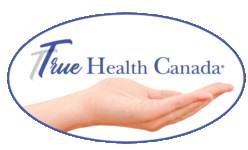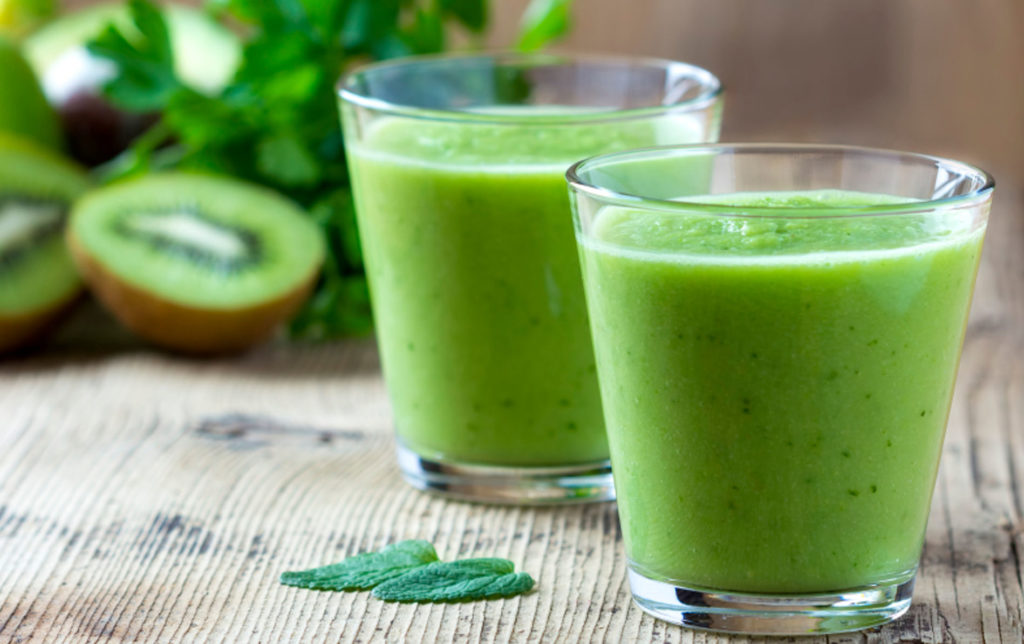Harmonia Deluxe provides an all-natural alternative to processed foods. Ingredients include a wide variety of sprouted seeds and grasses with nutritional integrity and enzymatic activity. The mix also contains antioxidant rich foods such as elderberry, cherry and blueberry, plus phytonutrients such as ginseng and ginger. Green drinks are a simple way to get more live greens into the diet when it may be otherwise impractical to do so. Green drinks are rich in antioxidants (compounds that protect cells from a number of toxic elements), chlorophyll, vitamins, minerals, enzymes and protein.
Chlorella
The term “green” substances refer to a category of products defined as containing high levels of chlorophyll, which gives them their color. The best “super green” sources are either marine algae or cereal grasses. Chlorella is fresh water, single-celled algae. It is rich in protein (57- 60%), carotenoids, chlorophyll, RNA-DNA, minerals, B vitamins (huge amounts of vitamin B-12) and vitamin E. Chlorella has abundant amounts of vitamin K, important in blood clotting and is rich in Essential Fatty Acids (EFAs). It has been estimated that up to 20% of the EFAs found in Chlorella are of the Omega-3 variety. As with Spirulina, Chlorella is an abundant source of enzymes and antioxidants. Unlike Spirulina, the blue pigment phycocyanin is not present.
Chlorella has strong effects on the immune system and related processing of toxic elements. Chlorella binds well with heavy metals, pesticides and other carcinogens and facilitates their removal from the body.
Kelps and Berries
Kelp is a brown algae rich in minerals especially iodine. It also provides high levels of B vitamins, vitamins E and K and Fucoidan, a polysaccharide. Kelp traditionally has been used to treat hair loss, problems with skin, nails, sensory nerves and brain tissue. It may also act as a laxative. As a rich source of iodine it helps support thyroid function.
The blueberry has many phytochemicals, or disease preventing substances. One of the phytochemicals is anthocyanin, the compound that gives blueberries their pigment. As evidenced by their deep blue color, blueberries have high levels of anthocyanins. In addition to functioning as very effective antioxidants, researchers suggest that anthocyanins also help to prevent urinary tract infections.
Scientists have found that the same chemicals that give tart cherries their color may relieve pain better than aspirin and ibuprofen. Cherries also may provide antioxidant protection comparable to commercially available supplements like vitamin E and vitamin C. The report appeared in the February edition of Journal of Natural Products published by the American Chemical Society.
Chlorophyll
It is important to note that a significant portion of the value of “green foods” is determined by its chlorophyll content. It is believed that chlorophyll, which is responsible for the green pigments in greens, is remarkably similar to hemoglobin found in human blood cells.
Other researchers point to the fact that chlorophyll rich plants are abundant sources of naturally occurring vitamin K. The fat soluble chlorophyll found in green supplements is the ideal way to obtain vitamin K, important in blood clotting, the treatment of osteoporosis, and a protective agent against toxins while undergoing chemotherapy. It is therefore vital that chlorophyll is consumed as part of “green foods” and not in its isolated water soluble form found on many store shelves. Chlorophyll is also a traditional treatment for constipation.
In general, “green foods” provide:
- A substance to actually stimulate repair of the DNA molecule
- A protein with anti-inflammatory qualities
- Substances that resulted in an anti-ulcer effect
- Super oxide dismutase (SOD), an extremely powerful “anti-aging” antioxidant, an anti-inflammatory enzyme and cancer preventive enzyme
- A powerful antioxidant, 2″-0-GlV, more effective than vitamin E
- Substances which help to inhibit platelet coaggulation
- Substances which protect the blood vessels from damage
- A natural way to degrade a variety of pesticides
Health Benefits from Sprouted Foods
“Eat your greens” is a common wisdom, but now new studies show why sprouts made from broccoli, cabbage, brussel sprouts, soy, kale and similar vegetables are rich in compounds that prevent cancer and other chronic diseases. The nutritional content of sprouts is many times greater than the original food value of the seeds and beans from which they sprout. As a seed sprouts, it produces large amounts of extra vitamins, anti-oxidants and enzymes. For example, A 1997 Johns Hopkins study discovered that broccoli sprouts contain a concentration of glucoraphanin that is up to 50 times greater than mature broccoli, whereas the Vitamin C content of a seed can increase 200 times in its sprout.
Growing sprouts can be a time-consuming operation, particularly growing all of the different kinds of sprouts contained in each Live Cell (Live Cell O, Live Cell A, Live Cell B, Live Cell AB). Seeds have to be watered and completely drained preferably twice a day, kept out of sunlight, and great care has to be given to keeping harmful bacteria/mold from contaminating the growing sprouts. Live Cell takes the work out of this process by providing an appropriate array of “beneficial” sprouts for each ABO blood type in a capsule form. These live sprouts are actually freeze-dried at the height of their growth, a process that preserves all of their nutritional value. In a busy world where even health conscious people often don”t have or don”t take the time to consume adequate amounts of vegetables much less sprouts, Live Cell offers a convenient way to do so.
According to an article in Good Sprout News (20 July 2003), scientists have been studying sprouts for centuries to better understand their high levels of disease-preventing phytochemicals and how they contribute to better health, from prevention to treatment of life-threatening diseases. The benefits of sprouts have been reinforced by ongoing studies that explore various sprout varieties for their nutritional properties and to validate health claims. These ongoing studies are being done by major organizations, which include the National Institutes of Health, American Cancer Society, and Johns Hopkins University.
Sulforaphanes and Glucosinolates
According to the American Cancer Society News, “…broccoli sprouts are better for you than the full-grown broccoli, and contain more of the enzyme sulforaphane which helps protect cells and prevents their genes from turning into cancer.” These findings are consistent with several epidemiological studies that have shown that sprouts contain significant amounts of vitamins A, C, and D. Sprouts are widely recognized by nutrition conscious consumers and health care professionals as a “wonder food.”
Live Cell contains cruciferous and non-cruciferous sprouts (cruciferous relates to plants that have flowers with four petals in the shape of a cross and long narrow seed pods. For example, crucifers include cabbages, turnips, broccoli, and wallflowers). Cruciferous sprouts are a rich source of active sulforaphanes, glucosinolates and antioxidants. These enzymes act as a defense mechanism, triggering broad spectrum antioxidant activity that neutralizes many free-radicals, cycling over and over again before they can cause the cell damage that may cause mutations. Furthermore, these indirect antioxidants are amazingly long-lasting. Unlike direct antioxidants, which neutralize only one molecule of a radical at a time, and are destroyed in the process, indirect antioxidants trigger an ongoing process that may last for days.
Visual Health
Studies show that even low concentrations of sprout antioxidants can protect human retinal (eye) cells against a variety of severe oxidative challenges. As humans age, the defense of their cells are known to decline. In the retina, this can lead to macular degeneration, the principal cause of deterioration of vision among the aged.
Hypertension
In a series of experiments in 2001 done at the University of Saskatchewan, rats with high blood pressure (hypertension) that were treated with sulforaphane showed a significant reduction in the tendency to develop artery-narrowing plaques. These researchers demonstrated that sulforaphane retards oxidative damage leading to arterial occlusion, a potentially significant breakthrough in proactive therapies against blocking of arteries. Sulforaphane may, therefore, interrupt the progression of plaque development to strokes.
Anticarcinogenic
Studies have shown that human prostrate cancer cells respond well to sprout antioxidants in the form of broccoli sprout extracts by showing dramatic increases in their protective Phase 2 enzymes. In his article, Dr. James D. Brooks of the Urology Department at Stanford University suggests, “Intervention trials may be warranted [in humans], and broccoli sprouts, a rich source of sulforaphane, may be appropriate for use in such a trial.”
Glucosinolate results as a part of the naturally occurring breakdown/degradation of sprouts. These breakdown products are called GDPs (glucosinolate breakdown products), and they have been shown to be effective in terms of a decreased risk of cancer in the lung, stomach, colon, and rectum, according to the Institute of Food Research.
Maximum Benefits
Taking Live Cell with Polyflora on an empty stomach and a full glass of water increases its efficacy.
First, in order for the Live Cell to be optimally utilized, it has to be hydrolysed by the colon microflora to GDPs (see above) which are then partly absorbed in the large intestine. For something to be hydrolysed, hydrolysis must occur. Hydrolysis by definition means “reaction with water”: a chemical reaction in which a compound reacts with water, causing decomposition and the production of two or more other compounds, as for example the conversion of starch to glucose, hence the full glass of water.
Second, in order for the body to absorb nutrients optimally, the colon microflora must be balanced. Polyflora as a probiotic provides that balance.
Third, the empty stomach prevents anything else from interacting with or disrupting this process. So the synergy of using Live Cell, Polyflora, and a full glass of water on an empty stomach gives a total beneficial effect that is greater than the sum of the parts, thus maximizing the benefit.
Harmonia (Greens)

Green Drink References
- Badamchian, M.; Naylor, P.H.; Spangelo, B.; Strickler, M.P.; Stone, M.J.; Hagiwara, Y.; Hagiwara, H.; and Goldstein, A.L. 1991. “Immune-endocrine Activities of Green Barley Leaf Extract (BLE): Regulation of Prolactin and Interleukin-2 Release in Vitro.” FASEB Journal, Vol. 5, No. 4.
- Hotta, Y. 1984. “Stimulation of DNA Repair-synthesis by P4-D I, One of the Novel Components of Barley Extracts.” Lecture given in Honolulu, Hawaii.
- Kitta, K.; Hagiwara, Y.; and Shibamoto, T. 1992. “Antioxidative Activity of an Isoflavonoid, 2″-O-Glycosylisovitexin Isolated From Green Barley Leaves.” Journal of Agricultural and Food Chemistry, Vol. 40, No. 10.
- Durham, J., Ogata, J., Nakajima, S., Hagiwara, Y., and Shibamoto, T. Degradation of organophosphorus pesticides in aqueous extracts of young green barley leaves (Hordeum vulgare L). 1999, J. of the Science of Food and Agriculture.
- Kubota, K.; Matsuoka, Y.; and Seki, H. 1983. “Isolation of Potent Anti-Inflammatory Protein From Barley Leaves.” The Japanese Journal of Inflammation, Vol. 3, No. 4.
- Moussazadeh, M.; Badamchian, M.; Hagiwara, Y.; Hagiwara, H.; and Goldstein, A. “Effect of Green Barley Leaf Extract (BLE) on Human Platelets in Vitro.” presentation at the 1992 FASEB (Federation of American Societies for Experimental Biology), Anaheim, CA.
- Nishiyama, T.; Hagiwara, Y.; Hagiwara, H.; and Shibamoto, T. 1993. “Inhibition of Malonaldehyde Formation from Lipids by an Isoflavonoid Isolated From Young Green Barley Leaves.” Journal of the American Oil Chemists” Society Vol. 70, No.8.
- Nakajima, Y. Hagiwara, H. Hagiwara, and T. Shibamoto. Effect of the Antioxidant 2″-O-Glycosylisovitexin from young green barley leaves on acetaldehyde formation in beer stored at 50 degrees C for 90 days. 1998, Journal of Agricultural and Food Chemistry, Vol. 46 (4), 1529-1531.
- Osawa, T.; Katsuzaki, H.; Hagiwara, Y.; Hagiwara, H.; and Shibamoto, T. 1992. “A Novel Antioxidant Isolated From Young Green Barley Leaves.” Journal of Agricultural and Food Chemistry, Vol. 40, No. 7. : 1135-1138.
Sprouted Foods References
- Fahey JW, Zhang Y, Talalay P.Broccoli sprouts: an exceptionally rich source of inducers of enzymes that protect against chemical carcinogens.Proc Natl Acad Sci U S A. 1997 Sep 16;94(19):10367-72.
- Degradation of sinigrin by Lactobacillus agillis strain R 16. Llanos, Smiths, Brink. Universidad de Castilla-La Mancha, Ciudad Real, Spain. International Journal of Food Microbiology, 1995 July;26(2):219-229.
- World Cancer Research Fund/American Institute for Cancer Research (1997) Food, Nutrition and the Prevention of Cancer: A Global Perspective 1997.
- Block G, Patterson B, Subar A. Fruit, vegetables, and cancer prevention: a review of the epidemiological evidence. Nutr Cancer 1992;12:1-29.
- Steinmetz K, Potter J. Vegetables, fruit, and cancer prevention: a review. J Am Diet Assoc 1996;96:1027-39.
- U.S. Department of Agriculture/U.S. Department of Health and Human Services. Nutrition and Your Health: Dietary Guidelines for Americans 1995. Fourth edition.
- National Research Council. Diet and Health: Implications for Reducing Chronic Disease Risk. Washington DC: National Academy Press, 1989.
- Havas S, Heimendinger J, Reynolds K, et al. 5-A-Day for Better Health: a new research initiative. J Am Diet Assoc 1994; 94:32-6.
- Graham S, Dayal H, Swanson M, Mittelman A, Wilkinson G. Diet in the epidemiology of cancer of the colon and rectum. J Nat Cancer Inst 1978;61(3):709-14.
- Kohlmeier L, Su L. Cruciferous vegetable consumption and colorectal cancer risk: meta-analysis of the epidemiological evidence. FASEB Journal 1997;11(3):A369.
- Beecher CWW. Cancer prevention properties of varieties of Brassica oleracea: a review. Amer J Clin Nutr 1994;59 (suppl):1166S-70S.
- Zhang Y, Talalay P, Cho CG, Posner, GH. A major inducer of anticarcinogenic protective enzymes from broccoli: isolation and elucidation of structure. Proceedings of the National Academy of Science USA 1992;89:2399-2408.
- Zhang Y, Kensler T, Cho CG, Posner GH, Talalay P. Anticarcinogenic activities of sulforaphane and structurally related synthetic norbornyl isothiocyanates. Proceedings of the National Academy of Sciences USA 1994;91:3147-50.
- Chung FL, Conaway CC, Rao CV, Reddy BS. Chemoprevention of colonic aberrant crypt foci in Fischer rats by major isothiocyanates in watercress and broccoli. Proceedings of the American Association for Cancer Research 2000;41:660.
- Gamet-Payrastre L, Li P, Lumeau S, Cassar G, Dupont MA, Chevolleau S, Gasc N, Tulliez J, Tercé F. Sulforaphane, a naturally occurring isothiocyanate, induces cell cycle arrest and apoptosis in HT29 human colon cancer cells. Cancer Research 2000;60:1426-16. “Powerful and prolonged protection of human retinal pigment epithelial cells, keratinocytes, and mouse leukemia cells against oxidative damage: the indirect antioxidant effects of sulforaphane.” Proceedings of the National Academy of Science USA, Vol. 98, pp. 15221-15226, 2001.
- http://www.pnas.org/cgi/doi/10.1073/pnas.261572998.
- “The impaired glutathione system and its up-regulation by sulforaphane in vascular smooth muscle cells from spontaneously hypertensive rats.” Hypertension, Vol. 19, pp. 1819-1825, 2001.
- http://www.jhypertension.com/article.asp?ISSN=0263-6352&VOL=19&ISS=10&PAGE=1819.
- “Potent induction of Phase 2 enzymes in human prostate cells by sulforaphane.” Cancer Epidemiology, Biomarkers & Prevention, Vol. 10, pp. 949-954. Sept. 2001.
- http://cebp.aacrjournals.org/cgi/content/abstract/10/9/949.


